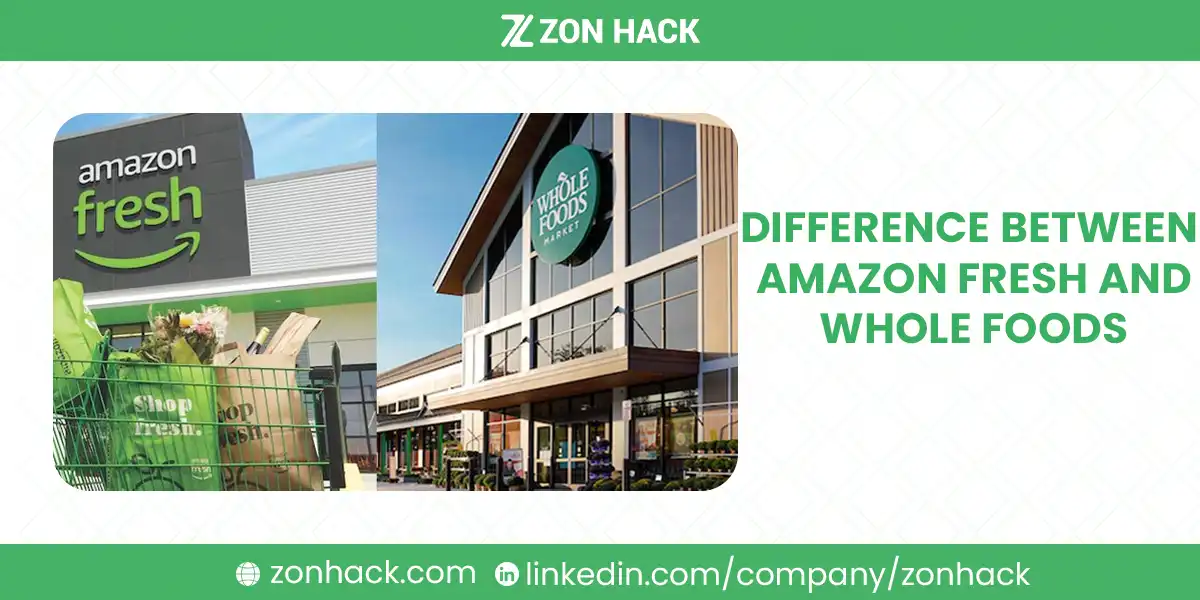As an Amazon seller, understanding the distinct ecosystems of Amazon Fresh and Whole Foods Market can offer valuable insights for optimizing your product strategies, pricing, and branding efforts. These two platforms cater to different customer bases and shopping habits, and by aligning your business approach with their unique attributes, you can unlock untapped opportunities.
This guide takes you through their key differences and provides actionable advice for sellers looking to thrive on either platform.
What are Amazon Fresh and Whole Foods
Amazon Fresh and Whole Foods serve as pivotal grocery services under Amazon’s umbrella. However, their focus and audiences are vastly different. Amazon Fresh caters to value-conscious shoppers who prioritize convenience, while Whole Foods Market appeals to a premium clientele that values organic and high-quality products. For sellers, this divergence means that the platform you choose—or how you adapt to both—can significantly impact your sales, reputation, and long-term growth.
Target Customer for Fresh vs Whole Foods
The success of your business relies heavily on understanding your target audience. Amazon Fresh and Whole Foods attract different types of buyers:
- Amazon Fresh customers prioritize affordability and convenience. They often seek everyday essentials, national brands, and a seamless online shopping experience.
- Whole Foods Market customers are more selective, focusing on organic, non-GMO, and eco-friendly products. These buyers are willing to pay a premium for high-quality, ethically sourced goods.
As a seller, consider whether your products meet the demands of cost-conscious families and busy professionals (Amazon Fresh) or health-conscious, quality-driven individuals (Whole Foods). For example, snack brands may find Amazon Fresh ideal for broader reach, while premium, organic baby food might perform better in Whole Foods.
Product Placement and Selling Strategies
When listing products for either platform, it’s crucial to understand what resonates with the audience:
- Amazon Fresh is ideal for everyday grocery items, such as packaged goods, household essentials, and fresh produce. Sellers of national brands or cost-effective alternatives like Amazon’s private labels (e.g., Aplenty) can thrive here.
- Whole Foods Market focuses on unique, high-quality, or organic-certified products. Sellers who specialize in items such as gluten-free snacks, artisanal goods, or plant-based proteins are more likely to succeed in this niche.
Pricing Strategy for Sellers
Pricing plays a crucial role in capturing your audience’s attention:
- Amazon Fresh customers expect competitive pricing. Offering bundle deals, discounts, or value packs can help attract price-sensitive shoppers. For example, positioning your cereal brand as an affordable alternative to major competitors can generate significant sales.
- Whole Foods Market shoppers prioritize quality over cost. Your pricing should reflect the premium nature of your product while justifying it through storytelling, certifications (organic, fair trade, etc.), or eco-friendly packaging.
Including real-life examples in your listings, such as sourcing stories or customer testimonials, can help justify higher prices on Whole Foods while still appearing genuine and relatable.
Logistics and Fulfillment Challenges
Sellers need to account for the operational nuances of both platforms:
- Amazon Fresh emphasizes fast delivery, which means sellers must ensure consistent stock levels and rapid fulfillment. If your products have a shorter shelf life, such as fresh vegetables or dairy, managing inventory becomes even more critical.
- Whole Foods Market has stringent quality and sustainability standards. Eco-friendly packaging and certifications for organic or non-GMO products are often prerequisites. Additionally, keeping up with in-store restocking for Whole Foods locations can require close coordination with Amazon’s fulfillment systems.
Branding Opportunities for Sellers
Both platforms offer unique opportunities to build your brand:
- Amazon Fresh enables sellers to reach a broad audience quickly. By using sponsored ads and featured promotions, you can increase visibility for your products. Highlighting features like convenience or multi-use functionality can help differentiate your brand.
- Whole Foods Market provides credibility and prestige to brands. Products featured in Whole Foods often gain a loyal following due to the platform’s reputation for quality. This is especially beneficial for new or niche brands aiming to build trust with discerning customers.
For example, a startup selling organic teas might benefit from Whole Foods’ customer base, which values authenticity and ethical sourcing, whereas a general tea brand could thrive on Amazon Fresh due to its competitive pricing and widespread appeal.
FAQ
Can I sell the same products on both Amazon Fresh and Whole Foods?
Yes, but it depends on your product category and quality. While Amazon Fresh accepts a broader range of goods, Whole Foods requires products to meet its strict quality and sourcing standards.
What certifications are needed for Whole Foods?
Whole Foods often requires organic certification, fair trade labels, or other quality assurances. Sellers should review their product’s compliance with these standards before applying.
How can I optimize my listings for each platform?
For Amazon Fresh, focus on competitive pricing, clear product images, and value-driven descriptions. For Whole Foods, emphasize premium features, ethical sourcing, and customer reviews.
Are there specific fees for selling on these platforms?
Amazon’s fulfillment and storage fees apply to both platforms. However, managing fresh or organic products may involve additional logistics costs.

